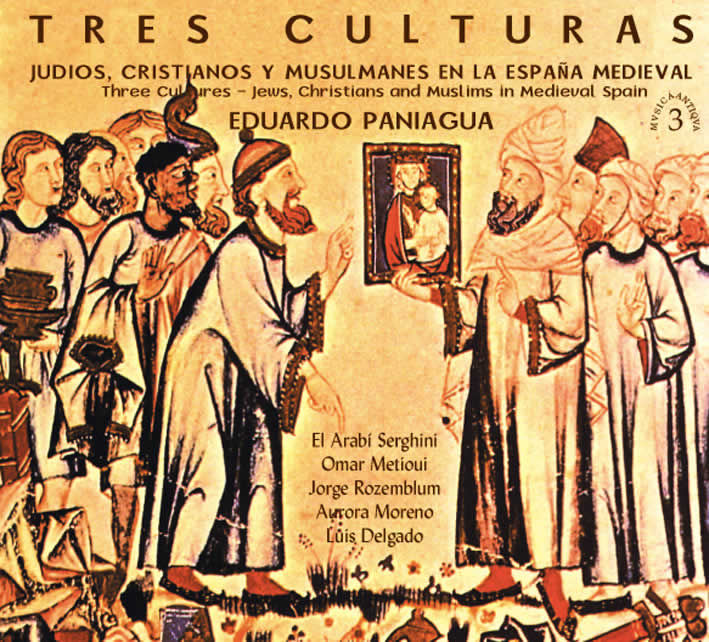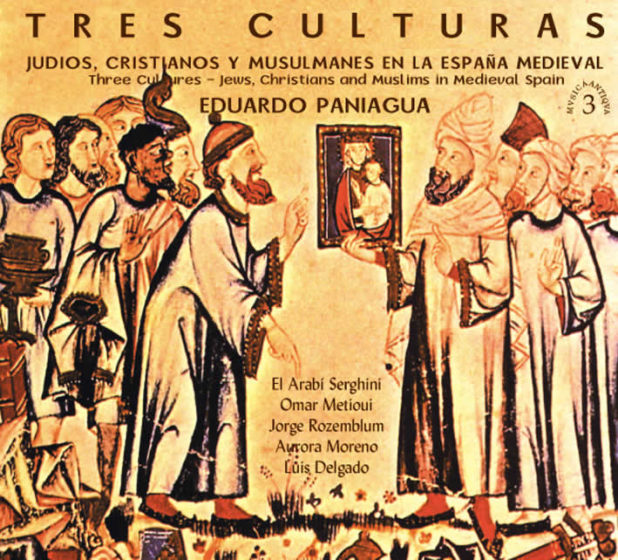Diversity Macht Frei
February 11, 2017
An important part of the Blame Whitey narrative that has come to frame the understanding of history conventionally found within the public sphere is the myth of tolerance in Muslim-ruled Spain: “convivencia” as it is called, or co-existence; together with an ostentatious appreciation of the supposed fruits that arose from this happy state of diversity, featuring, as is usually claimed, joyful interchange between Muslims, Christians and Jews, ultimately to be brought to an end by wicked Christian intolerance, culminating in the conquest of Granada in 1492 and the consequent expulsion of Muslims and Jews by those Catholic fanatics Ferdinand and Isabel.
Confronted with the spectre of Islamic horror in modern Europe, and the resistance it inspires in the invaded indigenous peoples, governments have eagerly taken up the myth of convivencia and embedded it in numerous textbooks. The Holocaust, the Transatlantic Slave Trade and tolerant Muslim Spain are now probably the three chief elements of the modern European child’s historical education, the better to condition them to accept their own extinction.
But how did an idea so absurdly at variance with the facts ever get off the ground in the first place? As with so many of the ills that plague us, it started with the Jews.
This is my translation of part of an academic paper on the idea of “Convivencia” written in French: “Chrétiens, juifs et musulmans dans l’Espagne médiévale. La convivencia et autres mythes historiographiques” by Christophe Cailleaux. If you can read French, it’s worth reading the whole thing (link supplied below).
Initially, this myth was used within the framework of what (((Salo W. Baron))) called “the lachrymose conception of Jewish history”(47): the idealisation of interfaith coexistence in the territory of Islam was highlighted all the more in that it underlined, through contrast, a supposed Christian intolerance. In a surpassingly transparent way, (((Heinrich Graetz))) declared that Jews living in the territory of Islam “were not forced, like their European co-religionists, to live in perpetual fear of attracting the ire of the clergy or the punishment of the sovereign.”(48).
This supposed Golden Age of Jewish life in Muslim countries no doubt forms part of 19th century European Orientalism, a mixture of fear and fascination for an Orient whose image was shifting and was largely constructed by the West itself, as Edward Saïd suggested.(49)
In a game of mirrors, it was then instrumentalised by the Zionist movement to denounce the persecutions that European Jews experienced in the second half of the 19th century and the start of the 20th century.
In this way an ever more radical gulf between Ashkenazi and Sephardi solidified in historiography. As (((Bernard Lewis))) said in other words, the “myth of Muslim tolerance” was used by several scholars at the end of the 19th century as “a stick to beat their Christian neighbours with”(50). The same discourse was then used to legitimate the creation then the existence of Israel: thus (((Yitzak Baer))) wrote his History of the Jews of Christian Spain in 1945 (51) “in part to show that the Jews were never truly tolerated (and therefore it was better for them to have their own state)” (52).
In a quirk of history, the same myth was then taken up by some specialists in the Arab world, infused with a sense of opposition to the Zionist project. This was the case in 1939 with The Arab Awakening by the Lebanese historian George Antonius, an echo of which can be found in a speech given in 1968 by the Egyptian academic Said Abdel-fattah Ashour in Cairo:
Throughout history the Jews never received better or kinder treatment than they did from Muslims […]. In Muslims they found […] merciful brothers who considered them companions in faith […]. Spain provides a clear example of the difference in treatment of Jews by Muslims and Christians. The experience of Muslims with Jews was always bitter and difficult because the Jews repaid sincerity with treachery and kindness with ingratitude (53).
References:
47. See Mark R. Cohen, Sous le croissant et la croix, Paris, Seuil, 2008 (1re édition en anglais en (…)
48 . Heinrich Graetz, Histoire des Juifs, Paris, A. Lévy, 1888, t. III, p. 279.
49 . See for example Edward W. Saïd, L’Orientalisme. L’Orient créé par l’Occident, Paris, Seuil, 197 (…)
50 . Bernard Lewis, History : Remembered, Recovered, Invented, Princeton, Princeton University Press, (…)
51 . Yitzhak Baer, Historia de los judios en la España cristiana, Madrid, Altalena, 1981 (1re en hébr (…)
52 . John Tolan, « Une convivencia bien précaire… », art. cit., p. 387. 53 . Cited by Shmuel Trigano, « L’Espagne des trois religions : les dégâts dans l’Éducation Nationale (…)
So Jews initially promoted the idea to stigmatise Christians. And Muslims then took it up, likewise to stigmatise Christians, but also Jews for their supposed ingratitude. Again we see the two branches of the Semitic family working together against Christians and Europeans, as they have done throughout the ages and continue to do today.
Increasingly, I find myself edging towards the conclusion that the true Jewish métier is not money-lending, as conventionally believed, but the falsification of history.


